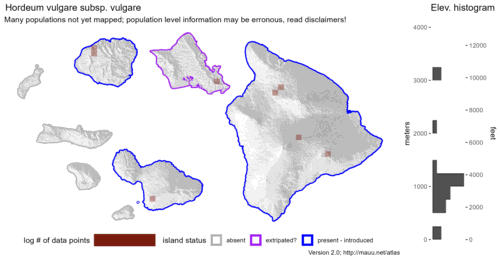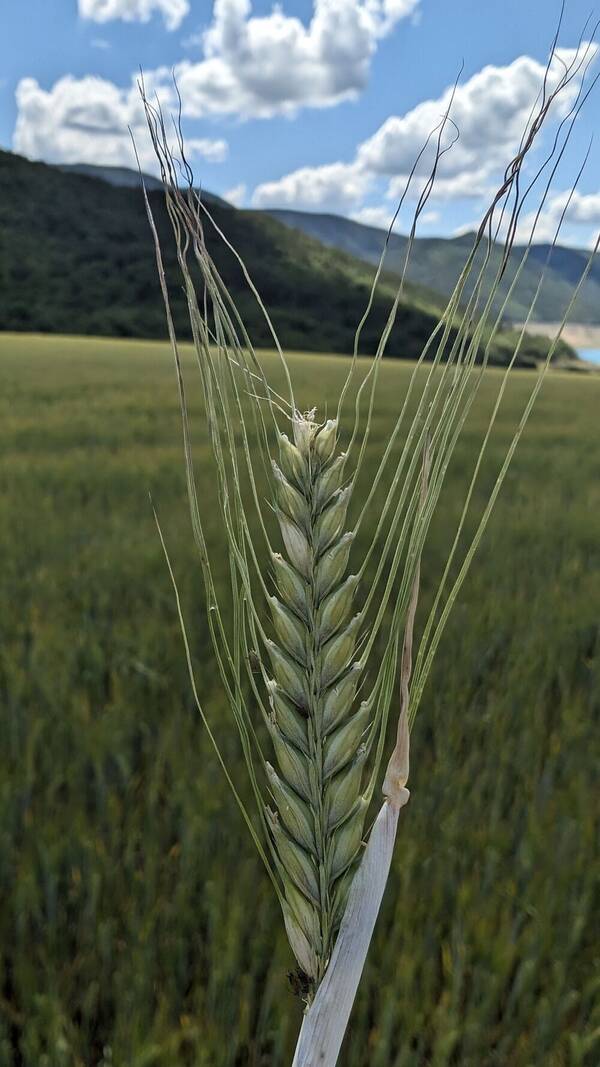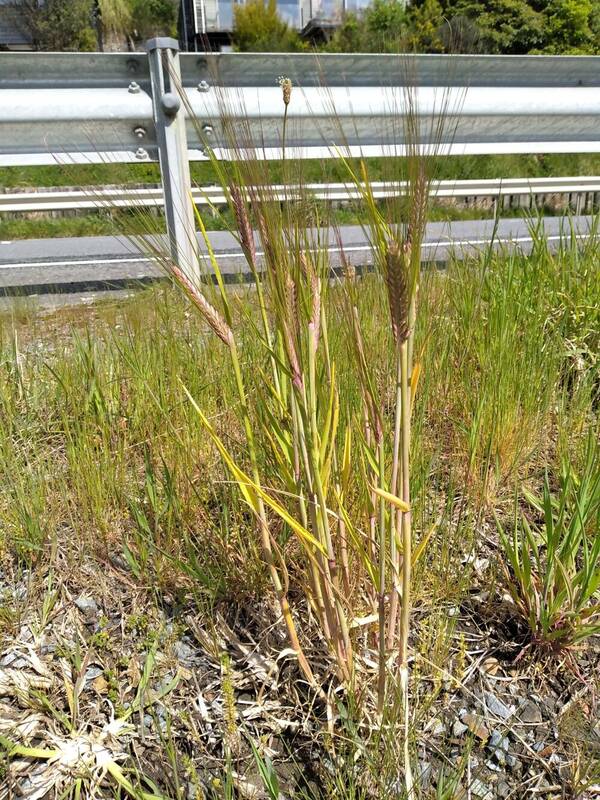Info
Subfamily: Pooideae
Genus etymology: Hordeum = "barley" [Latin]
Species etymology: vulgare = "common" [Latin] the common domesticated barley
Photosynthetic type: C3 (cool season)
Nativity: naturalized - intentional
First recorded in Hawaiʻi: 1922
Map

Inflorescence
 image credit: Joan_Simon
image credit: Joan_SimonPlant
 image credit: Leon_Perrie
image credit: Leon_PerrieDescription
Plants summer or winter annuals; loosely tufted. Culms to 100(150) cm, usually erect; nodes glabrous. Lower sheaths pilose; upper sheaths glabrous; auricles to 6 mm, well developed even on the upper leaves; blades to 30 cm long, 5-15 mm wide, flat, scabrous or glabrous. Spikes 5-10 cm long, 0.8-2 cm wide, green to purplish or blackish; nodes 10-30, with 3 spikelets per node, 0-2 lateral spikelets, in addition to the central spikelets, forming seed at maturity (resulting in 2-, 4-, and 6-rowed barley); rachises usually not disarticulating at maturity. Central spikelets sessile; glumes 10-30 mm, pubescent, flattened near the base; lemmas 6-12 mm long, 3+ mm wide, glabrous, sometimes scabrous, particularly distally, unawned or awned, awns 30-180 mm, usually scabrous; anthers 6-10 mm, yellowish. Lateral spikelets usually sessile if seed-forming, pedicellate if sterile; pedicels to 3 mm; lemmas usually 6-15 mm, awned when fertile, obtuse to acute when sterile. 2n = 14 (28).
(Description source: Barkworth, M.E., Capels, K.M. & Long, S. (eds.) 1993. Flora of North America, north of Mexico. Volume 24. Magnoliophyta: Commelinidae (in part): Poaceae, Part 1. Oxford University Press, New York. 911 pp. http://floranorthamerica.org/Hordeum_vulgare )